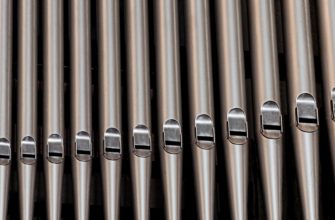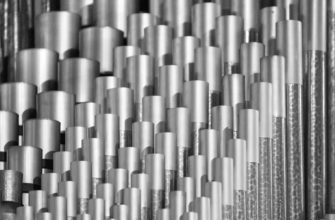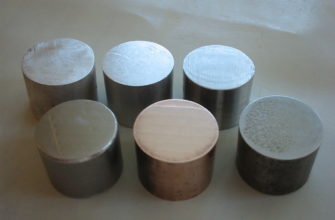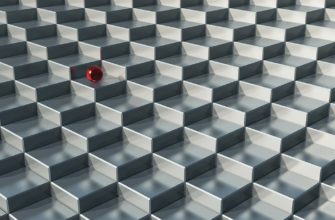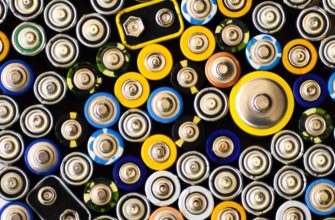Long Fiber Reinforced Thermoplastic Composites (LFRTCs) have gained significant attention in recent years due to their superior mechanical properties and potential for lightweight design in various industries. These composites consist of long continuous fibers embedded in a thermoplastic matrix, providing excellent strength, stiffness and impact resistance compared to traditional materials.
One of the key components in LFRTCs is thermoplastic carbon fiber, which offers exceptional strength-to-weight ratio and thermal stability. Thermoplastic fibers, such as polypropylene (PP), polyamide (PA) or polyphenylene sulfide (PPS), are commonly used to manufacture thermoplastic composites. These fibers are chosen for their specific mechanical properties and compatibility with the thermoplastic matrix.
- Thermoplastic prepreg: Long fiber thermoplastic composites are often manufactured using a technique called thermoplastic prepreg. In this process, the fibers are impregnated with melted thermoplastic resin and then cooled down to solidify. This results in a uniform distribution of fibers throughout the matrix, enhancing the overall mechanical performance of the composite.
- Increased mechanical performance: The long continuous fibers in LFRTCs provide enhanced mechanical properties compared to short fiber composites. The continuous fibers distribute loads more effectively, improving the strength and stiffness of the material. This makes LFRTCs a preferred choice for applications that require high strength and durability, such as automotive components, aerospace structures and sporting goods.
- Design flexibility: LFRTCs offer design flexibility by allowing the incorporation of different fiber orientations and configurations. By adjusting the fiber content and orientation, manufacturers can tailor the composite’s properties to meet specific application requirements. This versatility enables the production of lightweight, strong and complex-shaped parts that were previously difficult to achieve with traditional materials.
The advances in long fiber reinforced thermoplastic composites have revolutionized the materials used in various industries. The combination of thermoplastic carbon fiber, thermoplastic fibers and thermoplastic prepreg has led to development of lightweight, durable and high-performance composite materials. The design flexibility provided by LFRTCs further expands the potential applications of these composites, making them an attractive choice for manufacturers seeking advanced materials for their products.
Fundamentals of Thermoplastic Composites
Thermoplastic composites are a type of composite material that are composed of both a thermoplastic matrix and reinforcing fibers. These composites offer a wide range of benefits, including high strength-to-weight ratio, excellent chemical resistance and good impact resistance. One commonly used thermoplastic matrix material in composites is carbon fiber.
Thermoplastic carbon fiber composites offer unique advantages over traditional thermoset composites. They can be repeatedly melted and reformed without significant loss in mechanical properties. This means that thermoplastic composite materials have the ability to be recycled and reprocessed, making them a more sustainable option. Additionally, long fiber thermoplastics have superior strength and stiffness properties compared to short fiber thermoplastics, making them ideal for applications where high mechanical performance is required.
Thermoplastic Fiber
Thermoplastic fiber refers to the reinforcing fibers used in thermoplastic composites. These fibers can be made of various materials, such as carbon, glass or aramid. Carbon fiber is a commonly used thermoplastic fiber due to its high strength and stiffness. It is lightweight and has excellent fatigue properties, making it suitable for a wide range of applications, including aerospace, automotive and sporting goods.
Thermoplastic Prepreg
Thermoplastic prepregs are a type of semi-finished product that consists of continuous reinforcing fibers impregnated with a thermoplastic matrix. These prepregs can be easily processed and molded into complex shapes, making them suitable for manufacturing parts with intricate geometries. They can also be stored at room temperature and require less energy to process compared to thermoset prepregs.
Applications and Industries Utilizing Thermoplastic Composite Materials
Thermoplastic composites are widely used in industries such as automotive, aerospace, and consumer goods. They are used in various applications, including structural components, interior parts and lightweight panels. The combination of excellent mechanical properties, recyclability and durability make thermoplastic composites a promising material for future advancements in engineering and manufacturing.
Thermoplastic composites are a type of material that combines the benefits of both thermoplastic fibers and long fiber reinforced thermoplastics. This unique combination of materials provides enhanced strength and durability, making them suitable for a wide range of applications and industries.
One of the key applications for thermoplastic composite materials is in the automotive industry. These materials are used to make lightweight components that offer excellent mechanical performance, such as bumpers, body panels, and interior parts. The use of thermoplastic prepreg allows for the efficient production of complex shapes and reduces the need for post-processing, making it a cost-effective solution for automotive manufacturers.
- Thermoplastic fibers play a crucial role in the aerospace industry, where weight reduction is a top priority. Long fiber thermoplastic composites offer high strength-to-weight ratio, making them ideal for applications such as aircraft interiors, structural components, and engine parts. The use of these materials allows for a significant reduction in fuel consumption and emissions.
- Another industry utilizing thermoplastic composite materials is the sporting goods industry. Long fiber reinforced thermoplastics are commonly used in the production of tennis rackets, hockey sticks, and bicycle frames. These materials provide excellent stiffness and strength, improving performance and durability.
- The construction industry also benefits from the use of thermoplastic composite materials. They are used in the manufacturing of pipes, tanks, and panels, offering resistance to corrosion, high impact strength, and insulation properties. The lightweight nature of these materials makes installation and transportation easier and more cost-effective.
- Additionally, the marine industry utilizes thermoplastic composites for applications such as boat hulls, decks, and interiors. The materials’ resistance to moisture, UV radiation, and chemicals makes them ideal for harsh marine environments.
Unique properties of thermoplastic composite, such as high strength-to-weight ratio, durability, and resistance to harsh environments, make them an attractive choice for manufacturers looking to optimize performance and reduce costs.
Advantages and challenges of thermoplastic composites
Thermoplastic composites offer several advantages over traditional thermoset composites, making them increasingly popular in various industries. One of the key advantages of thermoplastic composites is their superior strength and stiffness. The long fiber reinforcement in thermoplastic composites enhances their mechanical properties, allowing them to withstand higher loads and stresses compared to other composite materials. For example, thermoplastic carbon fiber composites are known for their exceptional strength-to-weight ratio, making them ideal for applications where lightweight yet durable materials are required.
Another advantage of thermoplastic composites is their enhanced impact resistance. The long fibers in these materials provide a higher energy absorption capacity, making them more resistant to impacts and reducing the risk of damage or failure in critical applications. Additionally, thermoplastic composites offer excellent chemical resistance and can withstand exposure to harsh environments, including chemicals, moisture and temperature extremes. This makes them suitable for a wide range of applications in industries such as aerospace, automotive and oil and gas.
However, there are also challenges to be overcome when working with thermoplastic composites. Manufacturing thermoplastic composite parts can be more complex and time-consuming compared to traditional composite materials. The thermoplastic prepreg used in the production process requires careful handling and processing, including heating and cooling cycles, to achieve the desired properties. Moreover, the high melting point of thermoplastic materials necessitates specialized equipment and processes for their fabrication.
Furthermore, the cost of thermoplastic composites can be higher compared to other composite materials, mainly due to the additional steps and equipment required for their processing. However, as the demand for thermoplastic composites increases and manufacturing technologies continue to evolve, it is expected that the cost of these materials will become more competitive in the future.

Long Fiber Reinforced Thermoplastics (LFRT)
Long Fiber Reinforced Thermoplastics (LFRT) are a type of thermoplastic composites that are engineered to provide high strength and stiffness. They are made by combining thermoplastic resin with long fiber reinforcements, such as carbon fiber or glass fiber. The long fibers, typically ranging from a few millimeters to several centimeters in length, are evenly distributed within the thermoplastic matrix, resulting in a material with enhanced mechanical properties.
The long fibers provide superior strength and stiffness, allowing for increased load-bearing capacity and improved resistance to deformation. They also enhance impact resistance and fatigue performance, making LFRT suitable for applications that require high durability. Furthermore, the long fiber reinforcements improve dimensional stability, reducing the risk of warping or distortion in the final product.
| Advantages of LFRT | Applications |
|---|---|
| High strength and stiffness Improved impact resistance Enhanced fatigue performance Dimensional stability | Automotive components Aerospace parts Sports equipment Consumer goods |
LFRT offers a lightweight alternative to metal components in various industries. For example, in the automotive sector, long fiber reinforced thermoplastics are used in the manufacturing of lightweight and durable parts, such as bumpers, door panels and instrument panels. These materials help to reduce the overall weight of the vehicle, leading to improved fuel efficiency and reduced emission. Similarly, in aerospace applications, LFRT is utilized to fabricate lightweight structural components, such as aircraft interior panels and landing gear components. The high strength-to-weight ratio of long fiber reinforced thermoplastics makes them ideal for achieving weight savings in this industry.
Explanation of long fiber reinforcement
Long fiber reinforcement is a technique used to enhance the mechanical properties of thermoplastic composites. In this technique, thermoplastic fibers, such as carbon fibers, are incorporated into the matrix of the thermoplastic composite material. These fibers are much longer than the fibers used in short fiber reinforcement, typically ranging from several millimeters to several centimeters in length.
The use of long fibers offers several advantages over short fibers. One of the main advantages is improved strength and stiffness. The longer fibers provide a continuous reinforcement throughout the material, resulting in increased load-bearing capacity and resistance to deformation. This makes long fiber thermoplastic composites ideal for applications that require high strength and rigidity, such as automotive components, aerospace structures and sporting goods.
- Long fiber thermoplastic composites are typically manufactured using a thermoplastic prepreg process. In this process, the long fibers are impregnated with a molten thermoplastic resin and then molded under heat and pressure to form the final composite part. The use of a thermoplastic matrix allows for easy processing, as the material can be reheated and remolded multiple times without undergoing significant degradation.
- Another advantage of long fiber reinforcement is improved impact resistance. The long fibers provide a high degree of energy absorption, allowing the material to withstand sudden impact loads without failure. This makes long fiber thermoplastic composites suitable for applications that require impact resistance, such as protective gear and structural components.
Long fiber reinforcement offers significant improvements in strength, stiffness and impact resistance compared to short fiber reinforcement. The use of long fibers provides a continuous reinforcement throughout the thermoplastic composite material, resulting in enhanced mechanical properties. This makes long fiber thermoplastic composites well-suited for a wide range of applications in various industries.
Manufacturing processes of LFRT
The manufacturing processes of LFRT involve several steps to ensure the proper distribution and alignment of the fibers within the thermoplastic matrix.
One of the commonly used processes for manufacturing LFRT is the direct-long fiber thermoplastic (D-LFT) process. In this process, the fibers, typically glass or carbon, are first impregnated with the molten thermoplastic resin. The impregnated fibers are then fed into a heated die, where they are aligned and consolidated under pressure. The resulting product is a continuous, long fiber reinforced thermoplastic composite with evenly distributed fibers and improved mechanical properties.
- Another manufacturing process for LFRT is the thermoplastic prepreg process. In this process, the continuous fibers, such as carbon or glass, are first impregnated with a thermoplastic resin in a separate step. The impregnated fibers are then placed in a mold or a preform and heated under pressure to consolidate them into a solid composite. This process allows for better control over the fiber distribution and alignment, resulting in improved mechanical properties of the final product.
Thermoplastic composites can also be manufactured using other processes such as injection molding and compression molding. These processes involve melting the thermoplastic resin and injecting or compressing it into a mold that contains the reinforcing fibers. The mold is then cooled, and the composite part is removed. These processes are suitable for mass production and can be automated for high-volume manufacturing.
In summary, manufacturing processes of LFRT involve the impregnation of continuous fibers with thermoplastic resin, followed by consolidation to achieve proper fiber distribution and alignment. The direct-long fiber thermoplastic (D-LFT) process and thermoplastic prepreg process are widely used for manufacturing LFRT. Other processes, such as injection molding and compression molding, are also utilized for mass production of thermoplastic composites.
Key properties and benefits of Long Fiber Reinforced Thermoplastics (LFRT)
Long Fiber Reinforced Thermoplastics (LFRT) are a type of fiber reinforced thermoplastic composites that offer several key properties and benefits. These composites are made from thermoplastic resins infused with long, continuous fibers, such as glass, carbon, or aramid fibers. The long fibers in LFRT contribute to their enhanced mechanical properties and structural integrity.
- High strength and stiffness: LFRT exhibits exceptional strength and stiffness due to the presence of long fibers in the thermoplastic matrix. The long fiber length provides continuous load transfer and resistance against deformation under stress, resulting in improved structural performance.
- Enhanced impact resistance: The long fibers in LFRT contribute to improved impact resistance compared to short fiber reinforced thermoplastics. The prolonged load transfer between fibers helps to distribute impact energy, reducing the chances of crack propagation and enhancing the material’s ability to withstand sudden impacts.
- Good fatigue resistance: The continuous long fibers in LFRT help to resist fatigue failure under cyclic loading conditions. This property makes them suitable for applications subjected to repeated loading, such as automotive components and sporting goods.
- Low warpage and shrinkage: LFRT has reduced warpage and shrinkage compared to short fiber reinforced thermoplastics. The long fibers provide a bridging effect, preventing the matrix from shrinking or warping during the cooling process. This results in improved dimensional stability of the final product.
LFRT is considered a cost-effective alternative to traditional materials like metals and short fiber reinforced thermoplastics. It offers a combination of high strength, stiffness, impact resistance, fatigue resistance, and dimensional stability. These properties make LFRT suitable for various industries, including automotive, aerospace, construction, and consumer products.
Applications across industries
Thermoplastic composites, specifically long fiber reinforced thermoplastics (LFT), have found applications across various industries due to their superior mechanical properties, lightweight nature, and cost-effectiveness.
In the automotive industry, thermoplastic composites are being used to make lightweight and high-performance components for vehicles. LFT materials offer a balance between strength and weight reduction, making them ideal for applications such as automotive body panels, structural reinforcements and interior components. Additionally, their ability to be molded into complex shapes and their resistance to chemicals and corrosion make them suitable for various under-the-hood applications.
In the aerospace industry, thermoplastic composites are being utilized to manufacture components for aircraft and space vehicles. The high strength-to-weight ratio of LFT materials makes them ideal for applications such as aircraft interiors, engine components, and structural reinforcements. The ability to withstand high temperatures and their resistance to fatigue make them a reliable choice for demanding aerospace applications.
In the sporting goods industry, thermoplastic composite materials are being used to create lightweight and high-performance equipment. For example, long fiber thermoplastic composites can be used to manufacture tennis rackets, bike frames and hockey sticks. These materials provide the necessary strength and stiffness while reducing weight, allowing athletes to perform at their best.

Carbon Fiber Integration in Thermoplastics
Integration of carbon fibers into thermoplastics is an important area of advancement in the field of long fiber reinforced thermoplastics. Long fiber reinforced thermoplastics (LFRT) are composite materials that combine the strength and stiffness of the reinforcing long fibers with the ductility and high-temperature resistance of the thermoplastic matrix.
Carbon fibers, known for their high strength-to-weight ratio and excellent thermal and electrical conductivity, are widely used in various industries, including aerospace, automotive, and sporting goods. When integrated into thermoplastic composites, carbon fibers add significant strength and stiffness to the resulting material. This enhanced mechanical performance makes them ideal for applications that require high strength and lightweight characteristics, such as structural components in automotive and aerospace industries.
One example of carbon fiber integration in thermoplastics is the use of thermoplastic carbon fiber prepreg. A thermoplastic prepreg is a sheet-like material composed of fibers impregnated with a thermoplastic resin. Carbon fibers are commonly used in thermoplastic prepregs due to their excellent mechanical properties and compatibility with thermoplastic matrices. The prepreg can be heated and then molded into various shapes, allowing for the production of complex 3D structures.
Another example of carbon fiber integration in thermoplastics is the use of long fiber thermoplastic (LFT) materials. LFT materials are made by combining long fibers, such as carbon fibers, with a thermoplastic matrix. The long fibers provide reinforcement, while the thermoplastic matrix holds the fibers together and provides overall structural integrity. The resulting material has improved mechanical properties compared to short fiber thermoplastics, making it suitable for applications where high strength and stiffness are required.
Manufacturing techniques for thermoplastic carbon fiber composites
The manufacturing of thermoplastic carbon fiber composites involves several techniques that allow for the production of high-performance materials with improved mechanical properties and process efficiencies. These composites are made by combining thermoplastic resins with carbon fibers, resulting in a strong and lightweight material that can be used in a variety of applications.
One common manufacturing technique for thermoplastic carbon fiber composites is the use of long fiber thermoplastic (LFT) technology. LFT involves melting the thermoplastic resin and impregnating the carbon fibers with the molten resin. This creates a continuous fiber-reinforced thermoplastic composite material with long, unbroken fibers that provide exceptional strength and stiffness.
Another manufacturing technique for thermoplastic carbon fiber composites is the use of thermoplastic prepreg. Thermoplastic prepreg is a sheet or tape of carbon fibers already impregnated with a molten thermoplastic resin. This prepreg can be heated and placed into a mold, where it will consolidate and form a solid composite part.
Advantages of manufacturing techniques for thermoplastic carbon fiber composites
These manufacturing techniques for thermoplastic carbon fiber composites offer several advantages over traditional thermoset composites. First, the use of thermoplastic resins allows for easier recycling and reprocessing, as the material can be melted and reshaped multiple times without significant degradation of its performance properties. This makes thermoplastic composites more environmentally friendly and cost-effective in the long run.
In addition, the long fiber reinforced thermoplastics produced through LFT technology offer superior mechanical properties compared to short fiber composites. The long, continuous fibers provide enhanced strength, stiffness, and impact resistance, making them ideal for applications where high-performance is required.
Furthermore, the use of thermoplastic prepregs simplifies and speeds up the manufacturing process, as the material is already impregnated with the resin. This eliminates the need for separate resin infusion steps and reduces the overall production time and cost.
| Manufacturing Technique | Advantages |
|---|---|
| Long Fiber Thermoplastic (LFT) | – Exceptional strength and stiffness – Environmentally friendly and cost-effective – Ideal for high-performance applications |
| Thermoplastic Prepreg | – Simplifies and speeds up manufacturing process – Already impregnated with resin – Reduces production time and cost |
Overall, the manufacturing techniques for thermoplastic carbon fiber composites provide a range of benefits, resulting in strong, lightweight and environmentally sustainable materials that are suitable for various industries and applications.
Aerospace and Automotive Applications of Thermoplastic Carbon Fiber Composites
Thermoplastic carbon fiber composites have gained significant attention and are being increasingly utilized in the aerospace and automotive industries. The combination of thermoplastic matrices with carbon fiber reinforcement offers several advantages over traditional thermoset composites, including improved impact resistance, recyclability and faster processing times. With the ability to be heated, molded, and reshaped multiple times, thermoplastic composites provide a more versatile and cost-effective solution.
In aerospace applications, thermoplastic carbon fiber composites find use in aircraft structural components such as wings, fuselage sections and tail surfaces. These composites offer high strength-to-weight ratios, leading to lighter and more fuel-efficient aircraft. Additionally, the ability to withstand high temperatures and harsh environmental conditions makes them suitable for aerospace applications where performance and reliability are critical.
In the automotive industry, thermoplastic carbon fiber composites are employed in various components, such as body panels, chassis structures and interior trim. The lightweight nature of these composites contributes to improved fuel efficiency and overall vehicle performance. Moreover, their high strength and stiffness make them suitable for applications requiring excellent mechanical properties, such as crash structures and suspension components.
The aerospace and automotive industries are embracing thermoplastic carbon fiber composites due to their lightweight, high strength and environmental benefits. These advanced materials are revolutionizing the design and manufacturing processes, leading to more efficient and sustainable aircraft and vehicles.

Thermoplastic Prepreg
A thermoplastic prepreg is a type of composite material that combines long fiber thermoplastic with a thermoplastic matrix to create a high-performance material with enhanced mechanical properties. The prepreg consists of fibers, such as carbon fiber or glass fiber, that are impregnated with a thermoplastic resin, such as polyetheretherketone (PEEK) or polyamide (PA). The impregnation process ensures that the fibers are evenly distributed and fully wetted with the thermoplastic resin, resulting in a homogeneous and continuous material.
Thermoplastic prepregs are used in various industries, including aerospace, automotive, and sporting goods, due to their excellent strength-to-weight ratio, impact resistance and high temperature stability. The long fiber thermoplastic reinforcement provides improved mechanical properties, such as higher stiffness and strength, compared to traditional thermoplastic composites. Additionally, the thermoplastic matrix allows for easy processing, as the material can be melted and reformed multiple times without losing its properties.
One of the advantages of using thermoplastic prepregs is their ability to be formed into complex shapes using different manufacturing processes, such as compression molding or thermoforming. These processes allow for the production of parts with precise dimensions and tight tolerances. Thermoplastic prepregs can also be used in combination with other materials, such as metal or foam, to create hybrid structures that offer a combination of strength, lightness, and functionality.
Definition and manufacturing process of thermoplastic prepreg
A thermoplastic prepreg is a composite material that consists of thermoplastic fibers embedded in a matrix of thermoplastic resin. Thermoplastic composites are a type of composite material where the matrix material is a thermoplastic polymer, rather than a thermosetting polymer. They offer unique advantages over thermosetting composites, such as higher impact resistance, faster processing times and improved recyclability.
The manufacturing process of thermoplastic prepregs involves several steps. First, the thermoplastic polymer is melted and formed into a thin film or sheet. This molten polymer is then impregnated into the thermoplastic fibers, such as carbon fibers or glass fibers, using various techniques such as hot-melt impregnation or pultrusion. The impregnated fibers are then cooled and solidified to form a thermoplastic prepreg.
- Thermoplastic fiber: These are fibers made from thermoplastic polymers, such as polypropylene or polyethylene. They are lightweight, strong and exhibit good chemical resistance.
- Thermoplastic composite materials: These are composite materials that consist of thermoplastic fibers embedded in a matrix of thermoplastic resin. They offer excellent mechanical properties and can be easily processed.
- Fiber reinforced thermoplastic: This term refers to a composite material that consists of thermoplastic fibers reinforced with another material, such as carbon fibers or glass fibers. The reinforcement enhances the strength and stiffness of the thermoplastic composite.
- Long fiber reinforced thermoplastics: These are thermoplastic composites that have long fibers embedded in the matrix, typically with a fiber length-to-diameter ratio of at least 80:1. Long fibers offer improved mechanical properties and increased resistance to impact and fatigue.
- Long fiber thermoplastic: Another term used to describe long fiber reinforced thermoplastics. They are widely used in various industries, including automotive, aerospace, and sporting goods, due to their excellent performance and lightweight nature.
In summary, thermoplastic prepregs are composite materials made up of thermoplastic fibers and a thermoplastic resin matrix. The manufacturing process involves melting the thermoplastic polymer, impregnating it into the fibers, and solidifying the prepreg. These materials offer numerous advantages over traditional thermosetting composites and are widely used in industries where lightweight, high-performance materials are required.
Advantages and applications of thermoplastic prepreg
Thermoplastic prepreg is a type of composite material that combines the benefits of both long fiber thermoplastic and thermoplastic composites. It is made by impregnating long fibers, such as carbon fiber or glass fiber, with a thermoplastic resin, creating a sheet or tape-like form. This form allows for easier handling and processing compared to thermoset prepreg, as it can be heated and melted repeatedly without losing its properties.
One of the main advantages of thermoplastic prepreg is its high strength and stiffness. The long fibers provide reinforcement and enhance the mechanical properties of the thermoplastic matrix, making it ideal for applications requiring lightweight and strong materials. For example, thermoplastic carbon fiber prepreg is commonly used in aerospace and automotive industries for components that need to withstand high loads and extreme conditions.
- Another advantage of thermoplastic prepreg is its fast processing and shorter cycle times. Unlike thermoset prepreg, which requires a curing process that can take hours or even days, thermoplastic prepreg can be rapidly heated and cooled, enabling quicker production cycles. This makes it suitable for high-volume manufacturing and reduces production costs.
- Furthermore, thermoplastic prepreg offers excellent chemical and moisture resistance. The thermoplastic matrix provides a barrier against chemicals and prevents moisture absorption, which is crucial for applications in harsh environments. This makes it suitable for use in marine, oil and gas, and chemical processing industries.
- In addition, thermoplastic prepreg offers greater design flexibility compared to thermoset prepreg. It can be easily formed and molded into complex shapes using methods such as press forming, injection molding, or thermoforming, enabling designers to create intricate and customized parts.
In conclusion, thermoplastic prepreg offers numerous advantages, including high strength, fast processing, excellent chemical resistance, and design flexibility. These characteristics make it suitable for a wide range of applications, from aerospace and automotive to marine and industrial sectors.
Comparison with other thermoplastic composite materials
Long fiber thermoplastic (LFT) composites offer several advantages over other thermoplastic composite materials, such as thermoplastic carbon fiber, thermoplastic prepreg and thermoplastic fiber composites. LFT composites are made by impregnating long fibers with a thermoplastic resin, resulting in a higher fiber volume fraction compared to other thermoplastic composites. This higher fiber volume fraction leads to improved mechanical properties, such as higher strength and stiffness, making LFT composites suitable for applications requiring high-performance materials.
Unlike thermoplastic prepreg, which involves laminating thermoplastic sheets onto the fibers, LFT composites have a continuous fiber reinforcement, providing enhanced strength and resistance to impact and fatigue. The continuous fiber reinforcement also allows for better load distribution, reducing the risk of localized failure and improving overall structural performance.
- LFT composites also offer advantages over thermoplastic carbon fiber composites. While thermoplastic carbon fiber composites provide excellent strength-to-weight ratios, they are typically more expensive to produce due to the high cost of carbon fiber. LFT composites, on the other hand, can use lower-cost glass fibers without sacrificing performance, making them a cost-effective alternative.
- In comparison to thermoplastic fiber composites, LFT composites offer longer fiber lengths, resulting in improved mechanical properties. The longer fibers in LFT composites provide better load transfer, increased resistance to impact and fatigue, and reduced shrinkage during processing.

Future Trends and Innovations
The field of long fiber reinforced thermoplastics (LFRT) and thermoplastic composites is constantly evolving, with ongoing research and advancements leading to new innovations in materials, manufacturing processes, and applications. One of the key trends for the future is the development of new long fiber thermoplastic materials that offer enhanced mechanical properties and improved processing capabilities.
Researchers are exploring the use of different fiber materials, such as carbon fiber, to further enhance the strength and stiffness of thermoplastic composites. These thermoplastic carbon fiber composites have the potential to be used in high-performance applications such as aerospace, automotive and sporting goods, where lightweight and high strength are critical.
- In addition to novel fiber materials, the development of thermoplastic prepreg is another area of focus. Thermoplastic prepreg offers the advantage of improved handling and processing compared to traditional thermoset prepreg. By combining continuous fibers with a thermoplastic matrix in a pre-impregnated form, manufacturers can achieve faster production rates and better control over the final properties of the composite.
- Another area of innovation is the development of hybrid composites, which combine long fiber reinforced thermoplastics with other materials such as metals or ceramics. These hybrid composites can offer unique properties and performance characteristics, opening up new possibilities for applications in industries such as construction, renewable energy, and medical devices.
These innovations have the potential to revolutionize industries such as aerospace, automotive, and construction, providing lightweight and high-performance solutions for a wide range of applications.
Emerging technologies in the field of thermoplastic composites
Recent advances in this field have led to the development of several emerging technologies that further enhance the performance and manufacturing efficiency of fiber reinforced thermoplastic composites.
One such technology is long fiber reinforced thermoplastics (LFRT), which involve the use of continuous fibers embedded in a thermoplastic matrix. The long fibers, typically made of materials such as glass, carbon, or aramid, provide superior mechanical properties compared to short fibers, resulting in enhanced strength and stiffness. LFRTs are commonly used in applications that require high structural performance, such as automotive and aerospace components.
Another emerging technology is the use of thermoplastic prepregs, which are pre-impregnated thermoplastic fibers. This technology allows for the production of complex and highly tailored composite structures with precise fiber alignment and controlled resin content. Thermoplastic prepregs offer improved handling and processing characteristics compared to traditional thermoset prepregs, as they can be stored at room temperature and have a longer shelf life. This technology is particularly advantageous in industries such as sports and leisure, where lightweight and durable materials are in high demand.
| Technology | Application |
|---|---|
| Long fiber reinforced thermoplastics | Automotive and aerospace components |
| Thermoplastic prepregs | Sports and leisure industry |
“The utilization of long fiber reinforced thermoplastics and thermoplastic prepregs in various industries demonstrates the growing interest and potential of these emerging technologies. With their unique combination of mechanical properties and processability, these materials are set to revolutionize the composite manufacturing industry.”
Sustainable approaches in the development of thermoplastic composites
Thermoplastic composites are gaining popularity in various industries due to their exceptional mechanical properties, recyclability, and ease of processing. In recent years, there has been a significant focus on developing sustainable approaches in the development of thermoplastic composite materials. One of the sustainable approaches is the use of thermoplastic prepregs, which are pre-impregnated fibers with a thermoplastic matrix, resulting in improved mechanical properties and processability. The use of thermoplastic prepregs reduces waste during production as it eliminates the need for additional resins or adhesives.
Another sustainable approach is the utilization of long fiber reinforced thermoplastics (LFRTs), which are composite materials that combine long fibers, typically made of glass or carbon, with a thermoplastic matrix. LFRTs offer excellent strength, stiffness, and impact resistance, making them suitable for various applications. These materials can be efficiently molded and recycled, contributing to a more sustainable manufacturing process. Moreover, the high fiber volume fraction in LFRTs reduces the amount of resin required, resulting in reduced material costs and improved sustainability.
To further enhance the sustainability of thermoplastic composites, research is being conducted to explore the use of natural fibers, such as hemp, flax, or kenaf, as reinforcement materials. These natural fibers offer several advantages, including low cost, low density and biodegradability, making them an environmentally friendly alternative to traditional glass or carbon fibers. The combination of natural fibers with a thermoplastic matrix results in bio-based long fiber thermoplastic composites, which have the potential to significantly reduce the environmental impact of composite materials.

Case Studies
Case studies provide real-world examples of the application of long fiber reinforced thermoplastic composites in various industries. One such case study involves the use of thermoplastic prepreg in the automotive industry. In this case, long fiber thermoplastic composites made with carbon fiber reinforcement are used to replace traditional metal components in the vehicle’s chassis. The use of thermoplastic composite materials offers several benefits, including reduced weight, improved fuel efficiency and increased strength and stiffness.
A second case study highlights the application of fiber reinforced thermoplastic composites in the aerospace industry. In this case, long fiber thermoplastic composites are used to manufacture lightweight and durable components for aircraft structures. The use of these composites results in aircraft with reduced weight, increased fuel efficiency, and improved performance. Additionally, thermoplastic composites offer advantages such as resistance to impact and fatigue, as well as the ability to be easily recycled.
Case Study 1: Automotive Industry
- Thermoplastic prepreg
- Long fiber thermoplastic composites
- Carbon fiber reinforcement
- Replacing traditional metal components
- Reduced weight
- Improved fuel efficiency
- Increased strength and stiffness
Case Study 2: Aerospace Industry
- Fiber reinforced thermoplastic composites
- Lightweight and durable components
- Aircraft structures
- Reduced weight
- Increased fuel efficiency
- Improved performance
- Resistance to impact and fatigue
- Ability to be easily recycled
Performance outcomes and lessons learned from case studies
Case studies involving the use of thermoplastic composite materials, such as long fiber reinforced thermoplastics (LFRTs), have demonstrated promising performance outcomes in various applications. One such case study involved the use of thermoplastic composites in the automotive industry. By replacing traditional metal components with thermoplastic composites, manufacturers were able to achieve significant weight reductions without compromising on strength and durability. This resulted in improved fuel efficiency and reduced emissions for vehicles. Furthermore, the use of thermoplastic prepreg, which consists of long fiber thermoplastic materials impregnated with a thermoplastic resin, allowed for easier processing and increased design flexibility, leading to reduced production costs and faster cycle times.
In another case study, long fiber reinforced thermoplastics were utilized in the aerospace industry. The lightweight yet robust nature of these materials made them ideal for applications such as aircraft interiors, where weight reduction is crucial. By using thermoplastic fiber reinforced composites, manufacturers were able to achieve weight savings of up to 50% compared to traditional materials like aluminum. This not only improved fuel efficiency but also resulted in cost savings for airlines. Additionally, the excellent fire resistance properties of thermoplastic composites made them suitable for use in cabin interiors, where safety is paramount.
- Thermoplastic composites have also been successfully used in the construction industry, particularly for the fabrication of building facades. The high strength-to-weight ratio of these materials allows for the creation of lightweight yet sturdy structures. Moreover, the corrosion resistance and weatherability of thermoplastic composites make them ideal for exterior applications, where they can withstand harsh environmental conditions without deteriorating. By using thermoplastic fiber reinforced composites, construction companies have been able to reduce the maintenance requirements of buildings, resulting in long-term cost savings.
In summary, case studies have demonstrated the numerous benefits of utilizing thermoplastic composite materials, particularly long fiber reinforced thermoplastics. By adopting thermoplastic composites, manufacturers can achieve performance improvements and cost savings, while also contributing to environmental sustainability by reducing weight, fuel consumption and emissions.

Challenges and Solutions in Long Fiber Reinforced Thermoplastic Composites
The development and implementation of long fiber reinforced thermoplastic composites pose several challenges that need to be addressed to maximize their benefits. One of the challenges is ensuring a good fiber-matrix interaction, as the strength and performance of the composite depend on the effective transfer of stress between the fibers and the matrix. This can be achieved by optimizing the processing conditions, such as temperature, pressure, and cooling rate, to promote better bonding and adhesion between the long fibers and the thermoplastic matrix. Additionally, incorporating proper surface treatments, such as plasma treatment or chemical priming, can enhance the fiber-matrix interface and improve interfacial adhesion.
Another challenge in long fiber reinforced thermoplastic composites is achieving a uniform fiber distribution throughout the matrix. During the processing of the composite, the long fibers have a tendency to align in the direction of the flow, which can result in an anisotropic material with localized weak spots. To overcome this challenge, strategies such as melt flow control, fiber orientation control, and the use of pre-impregnated or pre-compounded thermoplastic prepregs can be employed. These solutions help to promote a more homogeneous fiber dispersion, leading to a more isotropic material with improved mechanical properties.
In summary, the challenges in long fiber reinforced thermoplastic composites revolve around achieving a strong fiber-matrix interaction and a uniform fiber distribution. By optimizing processing conditions and incorporating surface treatments, the fiber-matrix interface can be improved, enhancing the overall performance of the composite. Similarly, controlling melt flow, fiber orientation, and using pre-impregnated thermoplastic prepregs can help to achieve a more uniform fiber distribution, resulting in a more isotropic material with improved mechanical properties.
Current challenges in the development and adoption of thermoplastic composites
Fiber reinforced thermoplastic composites, also known as thermoplastic composites, are a promising class of materials that offer significant advantages over traditional thermosetting composites. They possess high strength-to-weight ratios, excellent impact resistance, and good chemical resistance, making them suitable for a wide range of applications in various industries, including automotive, aerospace, and construction. However, the development and adoption of thermoplastic composites are still facing some challenges.
1. Manufacturing complexities
One of the main challenges in the development of thermoplastic composites is the complexity of the manufacturing process. Compared to thermosetting composites, which can be easily processed using traditional methods such as resin infusion or curing, thermoplastic composites require specialized techniques and equipment. The use of high temperatures and pressures, as well as the need for precise control of cooling and solidification, make the manufacturing process more complex and expensive. Additionally, the selection and optimization of the thermoplastic matrix and the fiber reinforcement are critical to achieving desired performance, further adding to the complexity of manufacturing thermoplastic composites.
2. Cost considerations
The cost of thermoplastic composite materials is another significant challenge that hinders their widespread adoption. The raw materials for thermoplastic composites, such as thermoplastic carbon fibers, long fiber thermoplastic, and thermoplastic prepregs, are generally more expensive than those used in thermosetting composites. Additionally, the manufacturing process for thermoplastic composites requires specialized equipment and facilities, which further adds to the overall cost. These higher costs make thermoplastic composites less attractive for mass production applications where cost efficiency is crucial. Therefore, reducing the cost of thermoplastic composite materials and their manufacturing process is a crucial challenge that needs to be addressed to promote their wider adoption.
Innovative solutions and research addressing challenges in long fiber reinforced thermoplastic composites
Long fiber reinforced thermoplastic composites (LFRT) are gaining increased attention due to their excellent mechanical properties, such as high strength and stiffness, as well as their cost-effectiveness and recyclability. However, there are still several challenges that need to be addressed to fully exploit the potential of these materials.
- Improving interfacial adhesion: One of the key challenges in LFRT is achieving good interfacial adhesion between the long fibers and the thermoplastic matrix. Poor adhesion can result in fiber pull-out, reducing the overall strength and stiffness of the composite. Innovative solutions such as surface treatments and coupling agents have been developed to enhance the adhesion between the fibers and the matrix. For example, researchers have investigated the use of functionalized carbon nanotubes as a surface modifier to improve the interfacial properties in thermoplastic composites.
- Processing advancements: Another challenge is the processing of LFRT materials. Traditional processing techniques like injection molding can lead to fiber breakage and degradation, resulting in reduced mechanical properties. Researchers are exploring innovative processing techniques, such as extrusion and compression molding, to minimize fiber damage and maintain the integrity of the long fibers. Additionally, the development of advanced manufacturing technologies, such as 3D printing, holds promise for producing complex geometries with long fiber thermoplastics.
Furthermore, researchers are also investigating the addition of fillers and reinforcements to further enhance the mechanical properties of LFRT composites. For example, the incorporation of nanoparticles, such as graphene or clay nanofillers, can improve the stiffness and impact resistance of the thermoplastic composites. Moreover, the combination of long fibers with short fibers or particulate reinforcements can lead to hybrid composites with tailored properties.
| Innovative Solutions | Research Advancements |
|---|---|
| Surface treatments | Carbon nanotubes as surface modifiers |
| Extrusion | Investigation of 3D printing |
| Fillers and reinforcements | Nanoparticles and hybrid composites |
Advances in long fiber reinforced thermoplastic composites require a multidisciplinary approach, involving materials science, mechanical engineering, and manufacturing technologies. Collaborative research efforts are essential to overcome the challenges and drive the development of innovative solutions for the wider adoption of these high-performance materials in various industries.

Conclusion
Long fiber reinforced thermoplastics (LFRTs) have emerged as a promising solution for various industries, especially in the automotive and aerospace sectors. These materials offer excellent mechanical properties, such as high strength and stiffness, while also providing the benefits of thermoplastic composites, including recyclability and shorter processing times.
One significant advancement in LFRTs is the use of thermoplastic carbon fiber, which has shown to improve the overall performance of the materials. Thermoplastic carbon fiber allows for increased strength and reduced weight, making it an ideal choice for applications that require high strength-to-weight ratios.
Another key development in LFRTs is the use of thermoplastic prepreg. Thermoplastic prepreg eliminates the need for traditional impregnation processes, reducing manufacturing time and costs. Additionally, it enables better control over fiber placement, resulting in improved mechanical properties.
- Thermoplastic composite materials: These materials offer a wide range of benefits, including lightweight design, high specific strength, and recyclability. They have the potential to revolutionize industries such as automotive, aerospace, and construction.
- Thermoplastic composites: The use of thermoplastic composites allows for the creation of complex structures with tailored properties. The ability to process these materials at high speeds and in large volumes makes them attractive for mass production.
- Long fiber reinforced thermoplastics: LFRTs combine the advantages of thermoplastic composites with the enhanced mechanical properties provided by long fibers. These materials offer excellent impact resistance, stiffness, and strength, making them suitable for demanding applications.
In summary, the advancements in thermoplastic fiber and long fiber thermoplastic technology have opened up new possibilities for the use of LFRTs in various industries. The use of thermoplastic carbon fiber and thermoplastic prepreg has resulted in improved mechanical properties and processing efficiency. LFRTs have the potential to replace traditional materials, offering lightweight, strong, and recyclable alternatives.
Recap of key findings and insights
The research on thermoplastic composite materials, specifically long fiber reinforced thermoplastics (LFRTs), has resulted in several important findings and insights. Firstly, the use of thermoplastic prepreg has been found to greatly enhance the mechanical properties of composites. Thermoplastic prepreg refers to a pre-impregnated fiber reinforcement that can be melted and reshaped. This type of prepreg allows for better resin impregnation, leading to improved fiber wetting and interfacial adhesion.
One significant finding is the impact of different fiber types on the performance of thermoplastic composites. For example, the use of carbon fiber as a reinforcement in thermoplastic composites results in higher stiffness and strength compared to other fibers. Carbon fiber is known for its excellent mechanical properties and low density, making it an ideal choice for high-performance applications. The research also highlights the importance of fiber length and orientation in determining the final properties of the composite. Longer fibers generally result in improved mechanical properties, as they provide a continuous load transfer path and prevent crack propagation.
Another insightful finding is the effect of processing conditions on the properties of thermoplastic composites. Factors such as temperature, pressure, and cooling rate during the manufacturing process play a crucial role in the final properties of the composite. Optimizing these processing parameters can lead to composites with enhanced mechanical properties and reduced defects. Additionally, the research emphasizes the importance of understanding the relationship between the processing conditions and the microstructure of the composite, as this knowledge can aid in the development of improved manufacturing processes.
Future prospects and directions for the field of thermoplastic composites
As the field of thermoplastic composites continues to advance, there are several future prospects and directions that hold immense potential for further development. One exciting area of exploration is the use of thermoplastic carbon fiber composites, which combine the high strength and stiffness of carbon fiber with the processing advantages of thermoplastics. This combination offers a wide range of applications in industries such as automotive, aerospace and sports equipment.
The use of long fiber reinforced thermoplastics (LFRTs) also presents promising opportunities for the field. LFRTs provide enhanced mechanical properties compared to short fiber reinforced thermoplastics, making them suitable for demanding applications. By optimizing the manufacturing process and fiber-matrix interface, researchers can further improve the performance and cost-effectiveness of LFRTs.
- The development of innovative thermoplastic composite materials is another important direction for the field. Researchers are exploring new polymer matrices, such as polyetheretherketone (PEEK) and polyphenylene sulfide (PPS), that offer improved strength, heat resistance, and chemical resistance. Additionally, the incorporation of functional additives, such as flame retardants or conductive fillers, can expand the potential applications of thermoplastic composites.
- Long fiber thermoplastic (LFT) materials are also gaining attention due to their high mechanical performance and efficient manufacturing process. LFTs are produced using a direct compounding process, where the thermoplastic matrix is melted and mixed with the reinforcing fibers in a single step. This offers significant time and cost savings compared to traditional thermosetting composite manufacturing methods.
- The development of new processing techniques for thermoplastic composites is an ongoing area of research. Advanced manufacturing technologies, such as automated fiber placement and in-situ consolidation, enable the production of complex geometries and improve the overall efficiency of the manufacturing process.
In conclusion, the field of thermoplastic composites is poised for exciting advancements in the coming years. The combination of thermoplastic carbon fiber composites, long fiber reinforced thermoplastics, innovative materials, efficient manufacturing processes and new processing techniques will open up a multitude of possibilities for various industries. These advancements have the potential to revolutionize lightweight construction, improve energy efficiency and enhance the overall performance of end-use products.



